Why Aren’t CIOs Using Cloud Storage?
post by Chris Curran on September 2, 2010I thoroughly enjoyed the opportunity to speak at the CIO 100 Symposium & Awards Ceremony last week, with an audience of so many IT leaders who are driving business growth through innovation. As we all have witnessed, the early results from enterprise cloud computing initiatives have been mixed. During my presentation, we conducted a real-time survey via text messaging and I’d like to thank the 50+ CIOs and IT leaders who participated, as well as CompuCom for its sponsorship.
Let’s get to it. The survey consisted of seven basic questions, but none more basic than this:
Where do you have the single most successful production use of the cloud?
While about 42% of the survey participants selected “horizontal application,” just over 35% said they have no production cloud use at all. I’s also very surprised that cloud storage is so poorly utilized. It is simple to use, measure and its cost model is clear. Granted, cloud storage doesn’t make as much sense for a secure production database, but there has to be more out there just in the way of backups, file storage, etc. that could justify easy re-platforming in the cloud.
What is preventing you from more aggressively using the cloud?
Forty percent are most concerned about security, while 37% are overwhelmed by a presumed complexity.
When will the majority of your infrastructure be in the cloud?
With a verdict on corporate cloud computing projects still up in the air (excuse the pun), it’s interesting to see the variety of responses from our survey. Of the seven questions we asked the audience, only one (“When will the majority of your infrastructure be in the cloud?”) had a majority of respondents choosing the same answer. Fifty-nine percent of those answering said “Never.” Could this be a function of the lack of corporate agreement on the benefits that reside in the cloud?
What is the single most important attribute of the cloud?
There was little agreement among those polled when asked to choose the single most important attribute of cloud computing. “Elastic, as-needed capacity” was selected by roughly 32%, while the same percentage opted for “third-party management.” Some respondents (18%) singled out the “self-provisioning” nature of cloud computing, while 9% said “pay-as-you-go” is the most important attribute. Consequently, the remaining 9% selected “other.”
Where do you have the most promising active cloud evaluation?
Respondents agreed to an even lesser extent when we asked them to choose the most promising active cloud evaluation-even among the top three responses. Nearly 27% selected “server capacity,” while another 27% chose “horizontal application. “No active evaluations” came in just behind those groups, at 18%.
What percentage of your 2011 IT budget do you expect to save due to cloud use?
When asked what percentage of their 2011 IT budgets they expect to save due to cloud use, answers were spread out fairly even across four of the five selections.
What are other parts of your business doing with the cloud?
The ambiguity surrounding the enterprise’s adoption of cloud services was on full display when we asked the audience what other parts of their businesses were doing with the cloud. Roughly 41% of respondents indicated they were “totally unaware” of what their business counterparts were doing with the cloud, while a similarly-sized group (38%) said the business is pushing IT to evaluate and adopt cloud services. The remaining 21% said the business is purchasing cloud services on its own.
What can we take away from this modest sampling? We could dig down to glean deeper insights, but this exercise provides “Exhibit A” that the future remains “partly cloudy.” Yes, the cloud is here to stay-but finding value amid the haze is clearly not an all-or-nothing proposition.
It’s been said it takes 30 years for an idea to truly come to fruition in the marketplace, and cloud computing only entered the enterprise’s lexicon a handful of years ago. Even so, it is a testament to the cloud’s ability to quickly permeate nearly all facets of our lives-both professional and personal-that all large enterprises are at least kicking the tires on cloud options.
Thanks again to everyone who contributed to our survey.




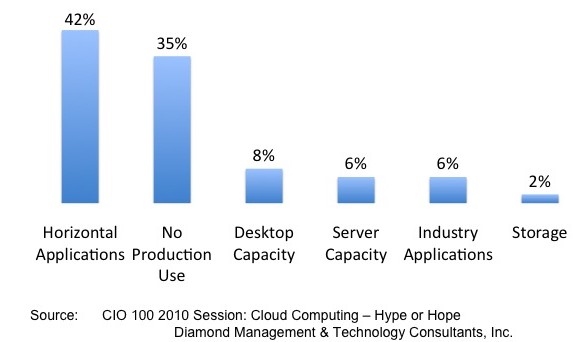
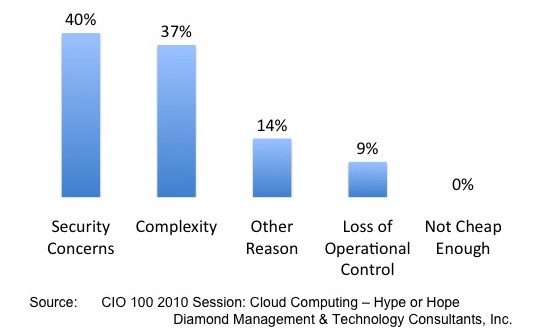
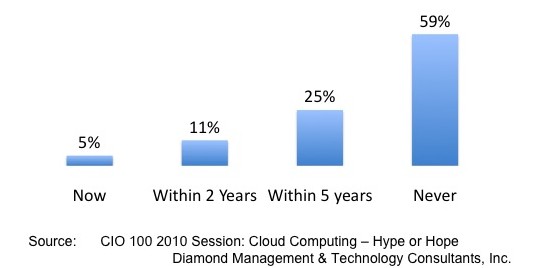
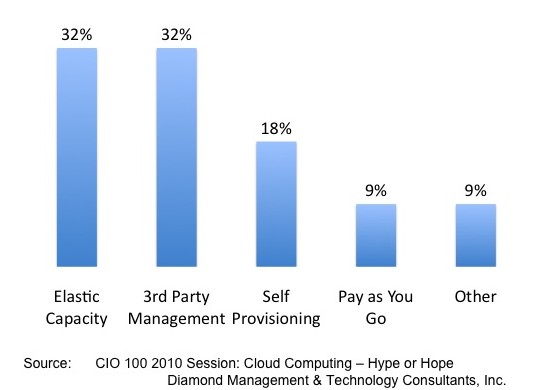
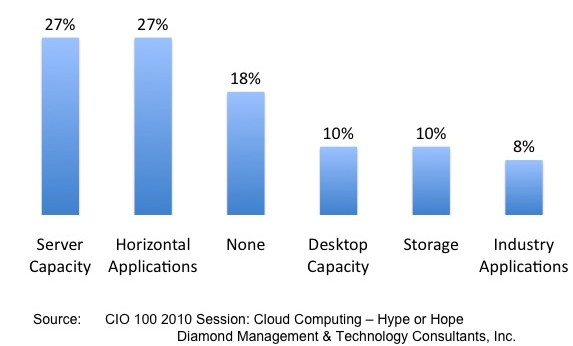
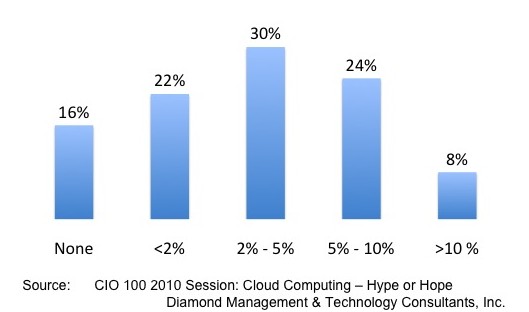
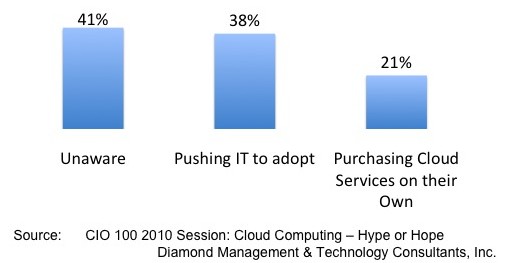
Pingback: 5 IT Innovations for 2011 — CIO Dashboard()